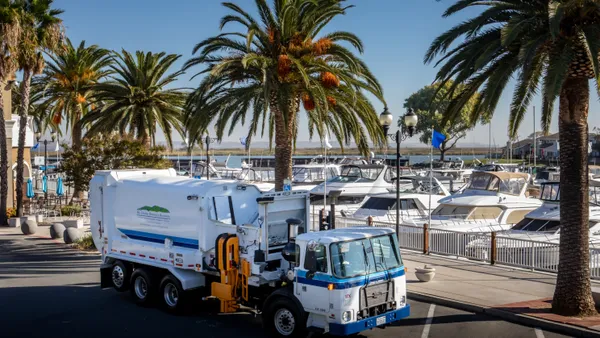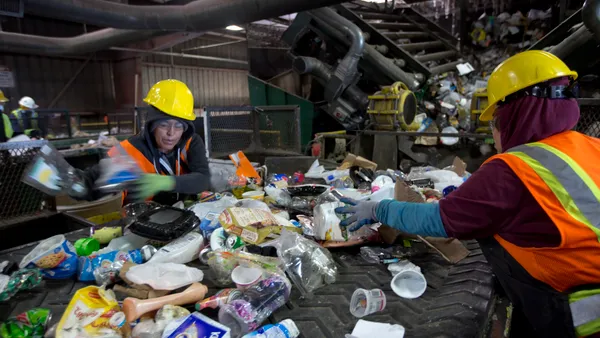Dive Brief:
- A new study from researchers at the Rochester Institute of Technology says that nearly 22 million pounds of plastic debris are entering the Great Lakes from the U.S. and Canada each year, as reported by Science Daily.
- Half of that plastic is going into Lake Michigan, followed by Lake Erie, Lake Ontario, Lake Huron and Lake Superior. The amount of plastic in Lake Michigan equates to 100 Olympic-sized swimming pools full of plastic bottles.
- Unlike in ocean gyres, much of this debris is carried to shorelines by winds and currents. About 80% of the litter found on these lakeside beaches is comprised of plastic.
Dive Insight:
This study, which will be published in an upcoming issue of Marine Pollution Bulletin, is said to be the first full-scale look at plastic pollution in the Great Lakes. The various computer simulations that were used to track this material found that cities like Chicago, Toronto, Cleveland and Detroit are all contributing to the problem and often receive each other's waste on their shores as a result. Like ocean plastic, much of this material was found to be too small for easy capture and preventative measures onshore are currently seen as the best options.
Such measures include anti-litter campaigns, street cleaning operations and more collection efforts at the source. Baltimore now has two "trash wheels" which collect waste from its local harbor and two Florida cities have even invested in automated waste collection boats to keep their canals clean. These efforts can catch large items before they break down into smaller pieces, but some environmental groups say the real answer is to change packaging materials to minimize the amount of plastic ending up in waterways at all.
While the scale of this problem in the Great Lakes may seem large, the amount of plastic debris ending up in the world's oceans is much larger. The Ocean Cleanup is working toward launching a prototype that can capture some of this debris next year and companies are getting creative with making products from the material. Preventing this material from entering any body of water remains a less expensive, though still elusive, option.













